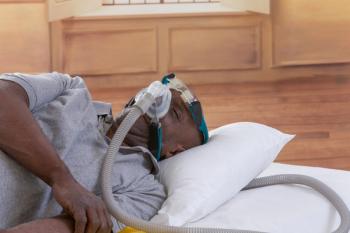
Combining Bone Health, Function Scores Refines MG Fracture Prediction
Key Takeaways
- Glucocorticoid use in myasthenia gravis patients increases fracture risk by reducing bone density and weakening bone structure.
- Combining FRAX and MG-ADL scales enhances the identification of myasthenia gravis patients at high fracture risk.
Combining FRAX and MG-ADL assessments enhances fracture risk prediction in patients with myasthenia gravis (MG), guiding targeted interventions for better outcomes.
With their higher fracture risk, stemming from glucocorticoid use, individuals who have
Glucocorticoids are known to increase fracture risk because their use can result in reduced bone density and weakened bone structure.1-4
New research published in
- High FRAX/high MG-ADL (HH; n = 16)
- High FRAX/low MG-ADL (HL; n = 12)
- Low FRAX/high MG-ADL (LH; n = 11)
- Low FRAX/low MG-ADL (LL; n = 14)
The patients were receiving care through the Department of Neurology at Toho University Ohashi Medical Center in Tokyo, and they were enrolled for the study between April and July 2012.
“Reduced musculoskeletal fitness, stemming from the characteristic muscle weakness of MG, can lead to limitations in ADL, which is generally associated with adverse health outcomes, including falls and fractures,” the study authors wrote. “Moreover, fractures themselves may impose a significant psychological burden, including fear of falling, anxiety, and depression, which can further erode overall well-being.”
They also cited the limits of existing risk assessment tools that include FRAX, which only looks at bone health status, and the Quantitative Myasthenia Gravis score, which measures muscle deficit via clinician feedback, as principal reasons for filling the knowledge gap with more specific patient assessment in the myasthenia gravis space.
The patients in the HL group were the oldest, at a median 49 years (range, 45.5-63.0), and the patients in the LH group were the youngest, at 36.0 years (range, 23.5-44.5). However, disease duration was longest in the HH group and shortest in the LL group, at 24.0 and 4.5 years. MG-ADL scores were lowest in the HL group and highest in the LH group, at 1.0 (range, 0.0-1.0) and 3.0 (range, 3.0-4.0). There were few instances of previous fracture—just 1 report from the HH group—and no reports of secondary osteoporosis.
Among the current treatments the patients reported, most patients from each group reported prednisolone use: 93.8% of the HH group; 75.0%, HL group; 81.8%, LH group; and 57.1%, LL group. The individuals in the LH group reported the highest daily median max dose of 50 mg (range, 30-50) vs those in the HL group reporting the lowest, 35 mg (20-50).
The HH and HL groups (high-FRAX groups) reported significantly lower baseline bone mineral density and corresponding T-scores, respectively, for the lumbar spine and hip compared with the LH and LL groups (low-FRAX groups):
- Lumbar spine:
- HH group: 0.72 g/cm2 and –2.4
- HL group: 0.74 g/cm2 and –2.3
- LH group: 0.87 g/cm2 and –1.3
- LL group: 0.88 g/cm2 and –0.8
- Hip:
- HH group: 0.56 g/cm2 and –2.0
- HL group: 0.54 g/cm2 and –2.3
- LH group: 0.77 g/cm2 and –0.6
- LL group: 0.73 g/cm2 and –0.9
Including and not including bone mineral density showed that baseline FRAX probabilities of major osteoporotic fracture and hip fracture were elevated in the HH and HL cohorts compared with the LH and LL cohorts (P < .001). However, significant differences were not seen among all 4 groups for baseline serum bone turnover markers.
Over the 10-year follow-up, there were 9 major osteoporotic fractures, all in the high-FRAX groups: 7 in the HH cohort (lumbar vertebra, n = 4; hip, n = 1; thoracic vertebra, n = 1; proximal humerus, n = 1) and 2 in the HL cohort (lumbar vertebrae, n = 1; hip, n = 1). The HH group had the lowest overall rate of fracture-free survival.
The authors underscore the importance of their data set by highlighting its overall principal strength: There is proof of the benefits of combining baseline FRAX probability and MG-ADL score for risk prediction and advanced risk assessment.
“FRAX alone may underestimate risk by neglecting disease-related factors, such as an increased propensity for falls. Similarly, in MG, higher MG-ADL scores likely reflect greater general frailty and vulnerability to falls, elevating fracture risk independently of FRAX,” they write. “Our findings strongly suggest that assessing MG-ADL alongside FRAX is crucial for accurately identifying the subset of MG patients at the highest fracture risk, allowing for more targeted and effective preventative interventions.”
Additional strengths of the findings are that combining FRAX and MG-ADL results can better help identify the patients who would most benefit from receiving bone-protective therapies, targeted fall-prevention strategies, and tailored physical therapy programs.
References
1. Canalis E. Mechanisms of glucocorticoid-induced osteoporosis. Curr Opin Rheumatol. 2003;15(4):454-457. doi:10.1097/00002281-200307000-00013
2. Urquiaga M, Saag KG. Risk for osteoporosis and fracture with glucocorticoids. Best Pract Res Clin Rheumatol. 2022;36(3):101793. doi:10.1016/j.berh.2022.101793
3. Fraser LA, Adachi JD. Glucocorticoid-induced osteoporosis: treatment update and review. Ther Adv Musculoskelet Dis. 2009;1(2):71-85. doi:10.1177/1759720X09343729
4. Cho SK, Sung YK. Update on glucocorticoid induced osteoporosis. Endocrinol Metab. 2021;36(3):536-543. doi:10.3803/EnM.2021.1021
5. Konno S, Uchi T, Kihara H, Sugimoto H. Functional status enhances the FRAX prediction of fractures in myasthenia gravis: a 10-year cohort study. J Clin Med. 2025;14(9):3260. doi:10.3390/jcm14093260
Newsletter
Stay ahead of policy, cost, and value—subscribe to AJMC for expert insights at the intersection of clinical care and health economics.













































